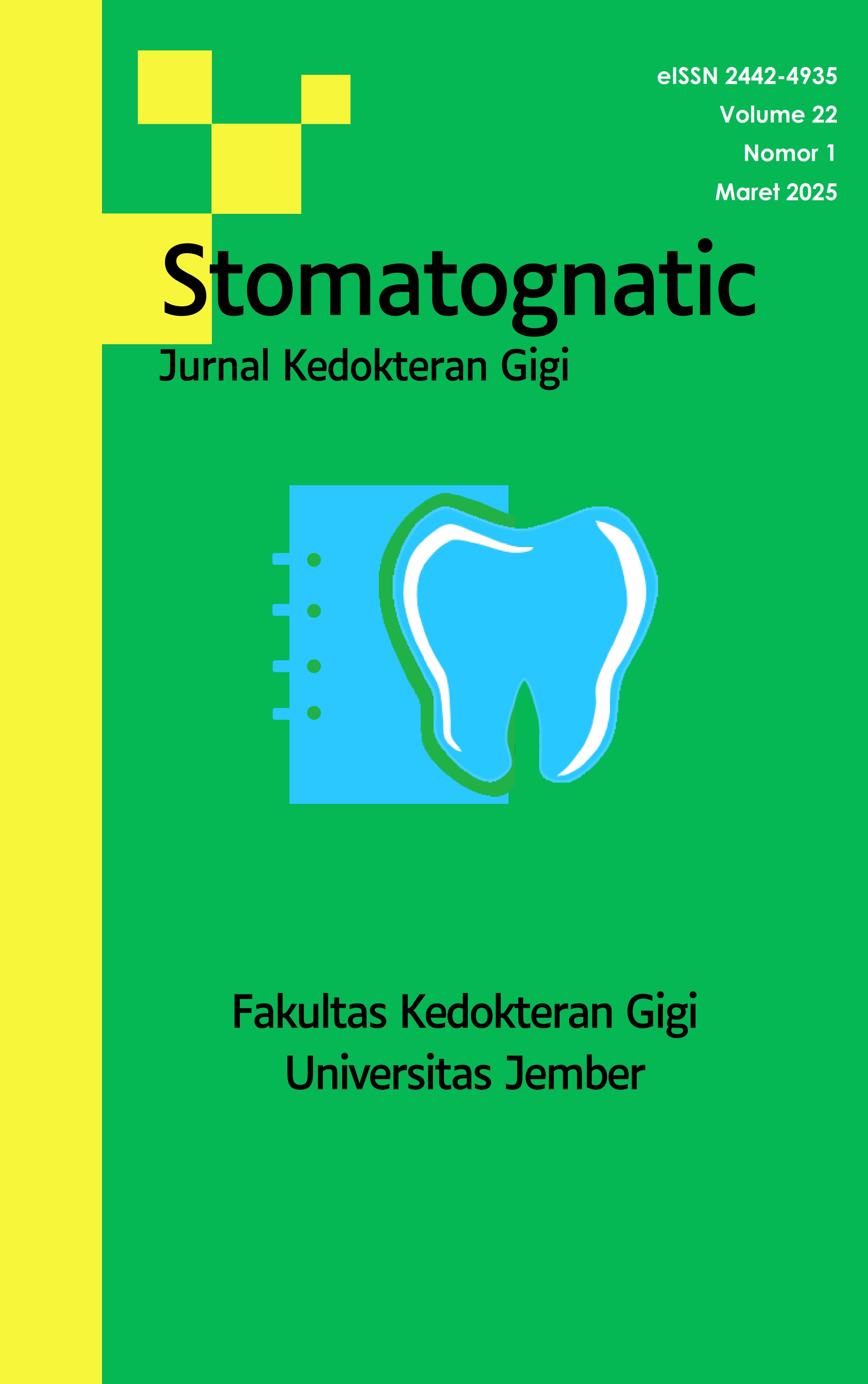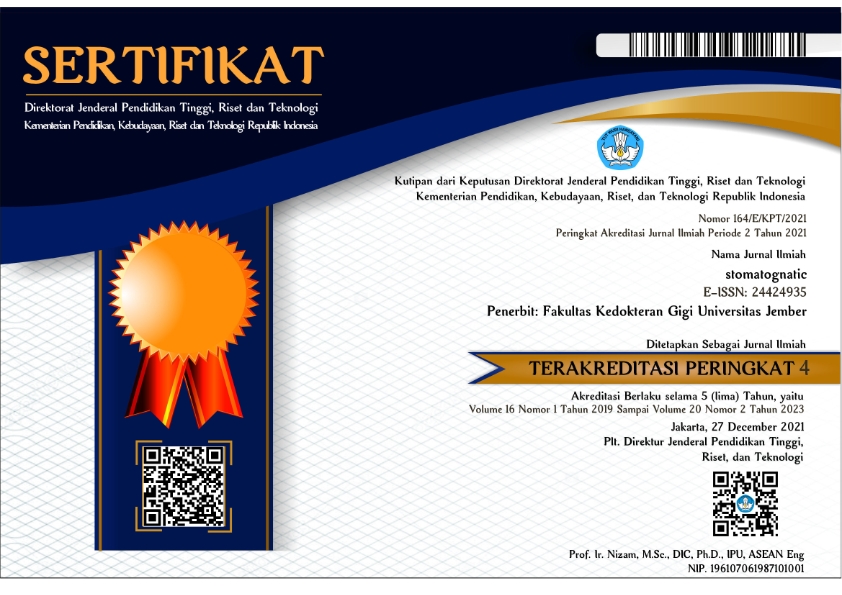Tingkat Keparahan Maloklusi Dan Kebutuhan Perawatan Ortodonti Pada Remaja Menggunakan Index of Orthodontic Treatment Need (IOTN)
DOI:
https://doi.org/10.19184/stoma.v22i1.53697Keywords:
IOTN, Malocclusion, OrthodonticsAbstract
Malocclusion is the second biggest problem after dental caries in dental and oral health problems in Indonesia with a prevalence of 80%. Malocclusion conditions can cause further disorders of chewing, swallowing, speech functions, difficulty maintaining oral hygiene and disrupt facial harmony which can result in lack of self-confidence in adolescents. Malocclusion can be overcome with orthodontic treatment. The purpose of this study was to determine the severity of malocclusion and the need for orthodontic treatment using index of orthodontic treatment need (IOTN). A descriptive cross-sectional study was conducted on 32 samples who were 15-16 years old in 10th grade students of SMA Negeri 7 Yogyakarta. Dental impressions and intraoral photographs were taken to determine the classification of malocclusion and the level of orthodontic needs using IOTN. Angle class I malocclusion has the highest prevalence (43.8%), followed by Angle class II malocclusion (21.9%), and Angle class III malocclusion (34.3%). The results of the analysis of orthodontic treatment needs based on DHC (21.9%) do not or slightly need treatment, (15.6%) need treatment and (62.5%) really need treatment. Based on AC (68.8%) do not or slightly need treatment, (6.2%) need treatment and (25%) really need treatment. The prevalence of malocclusion in adolescents is still quite high with the highest classification being Angle class I malocclusion, so that efforts to prevent and treat malocclusion are needed to prevent adverse side effects on dental and oral health.







